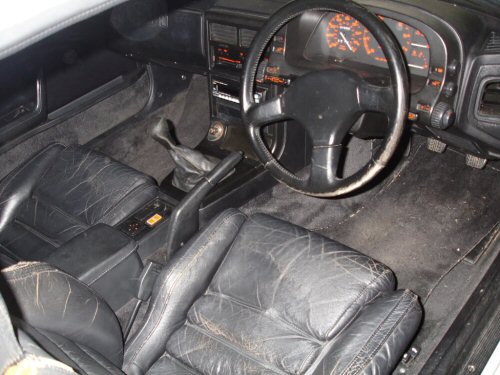
Buying a used car: The interior inspection
If you think you’ve found a used car that fits all your requirements and your budget then the next thing you’ll need to do is arrange to go and take a look at it. However, once you’re with the car what things should you be looking for?
When you go to view a car naturally the first thing you are going to look at is the exterior. You’ll be looking for the usual suspects such as scratches, blemishes and dents. However checking the interior is just as important. This is because the inside of the car can quickly reveal how well the car has been looked after by its owner.
So, what exactly are you looking for when checking the interior of a car? Well the first thing you need to do is go and sit inside the car as this is where you’ll be spending most of your time. Have a general look around for any wear and tear. Look at the condition of the fabrics used in seats and carpet, ensure they are not worn or damp. If you do feel any dampness then you need to find the source as it could indicate severe problems such as issues with the coolant system. You need to check if the instrument housing screws have been tampered with as any scuffs or scratching could indicate that the housing has been removed for some untoward reason. Make sure panels are aligned correctly and provide a good fit.
Take a look at the mileage reading on the odometer to make sure it’s what you expect. A well worn steering wheel and gear lever knob usually indicates that the car has covered a very high mileage. High mileage cars will also tend to have highly worn rubber pedal covers. Other signs of high mileage use include scratches on the ignition key barrel and worn seat edges.
Make sure you press every button and ensure that they actually do something. The last thing you want is to find yourself on a long journey only to find that the electric windows don’t work. Try and take a very systematic approach. Try electrical features such as the entertainment system, electric mirrors, door locks, air conditioning and the petrol cap release. Don’t just try buttons and functions on the driver’s side either, try them everywhere including the rear section of the car. Here is a general list of the type of things you should be looking at:
Seats unworn and free of cracks
All doors open and close freely
Boot opens and closes freely
Lacks a heavy scent of air freshener (may indicate something is being concealed)
All gauges work
No dashboard warning lights remain illuminated
Stereo works
Heater works
Air conditioner works
Windshield wipers work
Windshield wiper fluid dispenses properly
All seats equipped with functional seat belts
All seats adjust properly
Power windows operate properly
Sunroof opens and closes properly (if applicable)
Car alarm works (if applicable)
Boot and driver-side door lock and unlock with key
Hazard lights function properly
Headlights, including brights, work properly
Next, put the keys in the ignition and start it up. As soon as you do this keep a keen eye on the instrument panel and make sure that there are no engine-check or warning lights. Modern cars will also tell you when the next service is due so make sure this tallies with what the owner advertised.
Although it sounds odd when conducting an interior check, while the engine is running step out the car and take a quick look at the exhaust pipe. Steam coming out of the pipe is normal as to is water dripping on the floor. What you’re really on the lookout for is a blue-ish smoke which could be an indication that the engine has an issue. If you decide to take the car on a test drive then take another look at the exhaust pipe at the end of your journey. While the car is still running, check to see if there is white smoke coming out of the pipe if there is then this could indicate a big problem.
Finally, try and locate the VIN in the interior and make sure it matches the VIN in the documents provided by the seller.













